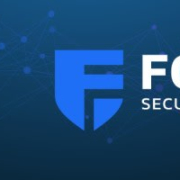Mimecast Incydr provides a seamless experience across platforms with lightweight clients and centralized administration. It focuses on real-time monitoring, instant access to backups, strong encryption, and customizable risk scoring. This ensures data protection against insider threats while promoting ease of use and low system overhead. Although improvements are possible in areas like Java dependency reduction, GUI design, cloud storage integration, and comprehensive reporting, Mimecast Incydr remains valuable for data classification, legal discovery, and identity management, especially for large environments handling classified information.
What key features does Mimecast Incydr offer?
- Lightweight Clients: Ensures minimal system impact
- Version Backups: Keeps data secure with historical availability
- Seamless Data Recovery: Provides instant access to critical data
- Multi-Platform Compatibility: Operates across diverse systems
- Strong Encryption: Protects sensitive information
- Customizable Risk Scoring: Tailors threat assessment to needs
- Flexible Storage Options: Supports continuous backup capabilities
What benefits or ROI should be considered?
- Ease of Use: Simplifies deployment and management
- Regulatory Compliance: Aids adherence to industry standards
- Centralized Administration: Streamlines management processes
- Low System Overhead: Minimizes resource consumption
- Real-Time Monitoring: Facilitates prompt threat response
Mimecast Incydr is leveraged across industries for data leakage protection and egress solution integration. It supports HIPAA-compliant backups and peer-to-peer data management, proving invaluable for corporate data protection and traveling employees facing data loss risks. Its application in legal data discovery and disaster recovery planning enhances its relevance for IT administrators and compliance officers managing data-intensive operations.
Mimecast Incydr was previously known as Code42 Next-Gen DLP, Code42 Next-Gen Data Loss Protection, Code42 Forensic File Search, Code42 Backup + Restore.
